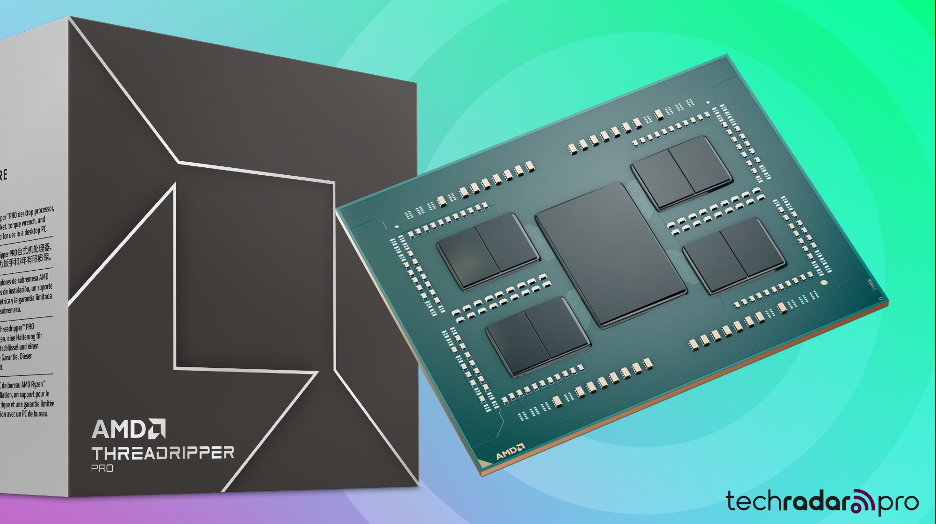Oh, hello Threadripper Pro 7995WX — AMD launches world’s fastest desktop CPU ever but things are about to get very, very confusing for power users
Professionals and creatives can now choose between Ryzen, Ryzen Threadripper, Ryzen Threadripper Pro and Epyc

AMD has unveiled not one, but seven new workstation/HEDT CPUs, including the most powerful of them all, the Zen 4-based Ryzen Threadripper Pro 7995WX, sporting 96 cores and 384 MB L3 cache.
Three other Threadripper Pro (TRP) processors make up the WX family with different core numbers (24, 32, 64), L3 cache and, for those who want some single-threaded action, a decreasing base speed (4.2GHz down to 2.5GHz for the 96-core champion).
A surprising addition to the line up is a trio of Threadripper (non-Pro?) processors, something that was absent from the previous 5000 generation and which are positioned as HEDT (High End desktop) CPUs, with a penchant for gaming.
The most powerful desktop processor?
The apparently non-Pro new offerings (sporting 24 cores, 32 cores and 64 cores respectively) will be available for purchase from November 21 and will cost $1499, $2499 and $4999 respectively.
Their Pro brethren, which also offer more PCIe 5.0 lanes (150% extra), more memory channels (2x) and AMD Pro business technologies, won’t go on sale just yet and will likely be prioritized for OEM and partners like HP, Lenovo or Dell.
Where it becomes interesting is that both sets of Threadripper processors will compete with the same three Intel CPUs: the Xeon w7-3455 (24 cores), w9-3475 (36 cores) and w9-3495 (56 cores). Of note is the fact that they have more memory channels and PCIe lanes than the normal Threadripper but fewer compared to the Pro ones.
Compared to the 5000 Zen-3 series, the 7000 WX series has higher single thread performance, 50% more threads, higher bandwidth/memory efficiency (thanks to DDR5) and up to 60% more cache per node (remember that these are single-socket systems). It also has a higher TDP (350W compared to 280W) thanks to much higher base/turbo frequencies. When paired with a WRX90 motherboard, the Threadripper Pro will handle up to 2TB of system memory as opposed to 1TB when teamed with a TRX50 one.
Sign up to the TechRadar Pro newsletter to get all the top news, opinion, features and guidance your business needs to succeed!
I don’t have access to independent performance reviews for now but it was never in doubt that Threadripper Pro was going to beat Intel’s best Xeon processor when it comes to productivity benchmarks. The 7995WX comes to life in multi-threaded tasks such as Chaos V-Ray where it is up to 123% faster than the w9-3495X CPU.
Now where it becomes interesting is that AMD also has, on one hand, a traditional Ryzen CPU range that goes up to 16 cores, a high base clock, up to 144 MB cache and a relatively low TDP (useful for mobile workstations) and on the other hand, half a dozen Epyc processors that have 96 cores or more with at least one having an incredible amount of cache (and a sizable price tag).
Challenger workstation vendors like Puget Systems or Titan computers have been building workstations using both consumer-grade Ryzen (they provide great per-core performance says Puget Systems) and Epyc (they are built for flexibility, performance and security says Broadberry). The latter offers dual socket (up to 256 cores), up to 4TB memory and the ability to plug eight (yes, eight) Geforce-class GPUs; no surprise that they power some of the best workstation PCs around. And that may well be the biggest threat to AMD’s fastest Threadripper Pro processor.
More from TechRadar Pro

Désiré has been musing and writing about technology during a career spanning four decades. He dabbled in website builders and web hosting when DHTML and frames were in vogue and started narrating about the impact of technology on society just before the start of the Y2K hysteria at the turn of the last millennium.